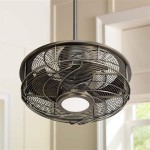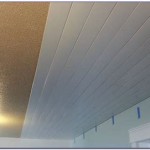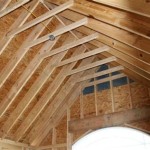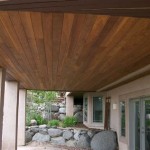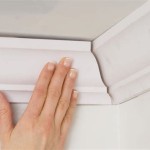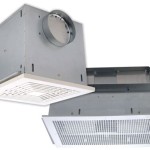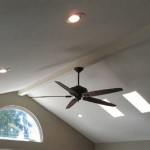What Is A Popcorn Ceiling Made Of?
Popcorn ceilings, also known as acoustic ceilings or stipple ceilings, were a popular choice in residential construction from the 1950s through the 1980s. Their appeal stemmed from their ability to dampen sound, hide imperfections in the ceiling, and offer a relatively inexpensive way to finish a room. However, the composition of popcorn ceilings has varied over time, and understanding the materials used is crucial, particularly when considering removal or renovation.
The primary component of a popcorn ceiling is typically a base material that provides the texture and bulk. This base material is then combined with a binder to help it adhere to the ceiling surface. Water is also added to create a workable consistency for application, usually using a spray gun. The specific type of materials used in these mixtures has evolved due to environmental regulations and concerns about health hazards.
The Role of Asbestos in Early Popcorn Ceilings
One of the most significant concerns surrounding older popcorn ceilings is the potential presence of asbestos. Asbestos is a naturally occurring mineral fiber that was widely used in construction materials due to its fire-resistant and insulating properties. It was commonly added to popcorn ceiling mixtures as a texturizing agent and to improve the application and durability of the finish.
The problem with asbestos lies in its potential health risks. When asbestos-containing materials are disturbed, they release microscopic fibers into the air. Inhalation of these fibers over prolonged periods can lead to serious respiratory diseases, including asbestosis, lung cancer, and mesothelioma. Due to these health concerns, the use of asbestos in popcorn ceilings was phased out in the late 1970s, with a complete ban implemented in many countries by the mid-1980s.
Determining whether a popcorn ceiling contains asbestos requires professional testing. Visual inspection alone cannot confirm the presence of asbestos fibers. Certified asbestos inspectors can take samples of the ceiling material and send them to a laboratory for analysis. The laboratory uses specialized techniques, such as polarized light microscopy (PLM), to identify the presence and concentration of asbestos fibers.
If a popcorn ceiling is found to contain asbestos, it is crucial to avoid disturbing it. Sanding, scraping, or drilling into the ceiling can release asbestos fibers into the air, posing a health risk to occupants. Removal of asbestos-containing popcorn ceilings should be performed by licensed and trained asbestos abatement professionals. These professionals have the knowledge, equipment, and procedures necessary to safely remove and dispose of the asbestos material, minimizing the risk of fiber release.
Non-Asbestos Materials in Later Popcorn Ceilings
Following the restrictions on asbestos, manufacturers began using alternative materials to create popcorn ceilings. These materials were designed to provide similar texture and acoustic properties without the health risks associated with asbestos.
One common alternative is vermiculite. Vermiculite is a naturally occurring mineral that expands when heated, creating a lightweight and porous material. It was sometimes used as a replacement for asbestos in popcorn ceiling mixtures. However, it is important to note that some vermiculite mines were contaminated with asbestos. Therefore, even if a popcorn ceiling is labeled as "asbestos-free," there is still a possibility that it may contain trace amounts of asbestos if it was produced using contaminated vermiculite.
Another commonly used material in non-asbestos popcorn ceilings is cellulose. Cellulose is derived from recycled paper products and is a readily available and inexpensive material. It provides the bulk and texture for the ceiling finish. Cellulose-based popcorn ceilings are generally considered safe, although some individuals may be sensitive to dust or paper particles.
Other materials that may be found in non-asbestos popcorn ceilings include perlite, polystyrene, and gypsum. Perlite is a volcanic glass that expands when heated, creating a lightweight and porous material. Polystyrene is a type of plastic foam that can be used to create a textured finish. Gypsum is a mineral commonly used in drywall and plaster products.
The specific combination of materials used in a non-asbestos popcorn ceiling can vary depending on the manufacturer and the intended properties of the finish. It is always advisable to consult with a professional if you are unsure about the composition of your popcorn ceiling.
Application and Other Components
Regardless of the base material used, the application process for popcorn ceilings typically involves mixing the dry ingredients with water and a binder. The binder helps the mixture adhere to the ceiling surface and provides durability to the finish.
Common binders used in popcorn ceiling mixtures include vinyl acetate copolymers, acrylic polymers, and casein. Vinyl acetate copolymers are synthetic resins that provide good adhesion and flexibility. Acrylic polymers are also synthetic resins that offer good weather resistance and durability. Casein is a protein derived from milk and has been used as a binder in paints and coatings for many years. The choice of binder can affect the overall performance and appearance of the popcorn ceiling.
The mixture is then applied to the ceiling using a spray gun. The spray gun allows for even distribution of the mixture and creates the characteristic textured finish. The size and density of the texture can be adjusted by changing the nozzle of the spray gun and the consistency of the mixture.
Additives may also be included in the popcorn ceiling mixture to improve its properties. For example, preservatives may be added to prevent mold or mildew growth. Fire retardants may be added to increase the fire resistance of the finish. Pigments may be added to change the color of the ceiling.
It's also important to note the substrate to which the popcorn ceiling is applied. In many cases, the ceiling beneath is drywall. If the popcorn ceiling is removed, the condition of the drywall beneath needs to be assessed. The drywall may need patching, repair, or even replacement before any new finish can be applied.
In summary, a popcorn ceiling is composed of a base material (which may be asbestos, vermiculite, cellulose, perlite, polystyrene, or gypsum), a binder (such as vinyl acetate copolymers, acrylic polymers, or casein), water, and potentially additives. The specific combination of materials used can vary depending on the age of the ceiling, the manufacturer, and the intended properties of the finish. If there is a concern about asbestos content, testing by a certified professional is critical. Understanding the composition of a popcorn ceiling is essential for safe removal, renovation, and maintenance.

How Can You Tell If There Is Asbestos In Popcorn Ceilings

Popcorn Ceiling Removal How It Transforms Your Home Air Quality Multi Trade Building Services

How Are Popcorn Ceilings Made Of What Renoviso

How Popcorn Ceilings Are Installed Sensibuild Construction

How To Tell If Your Popcorn Ceiling Has Asbestos

How To Tell If Popcorn Ceiling Has Asbestos Removal Pro

The Joy Of Popcorn Ceiling Removal Centsational Style

Popcorn Ceilings Asbestos Everything You Should Know

Popcorn Ceiling Removal How It Transforms Your Home Air Quality Multi Trade Building Services

Popcorn Ceiling Vs Textured What S The Difference Spray Tex Painting
Related Posts

